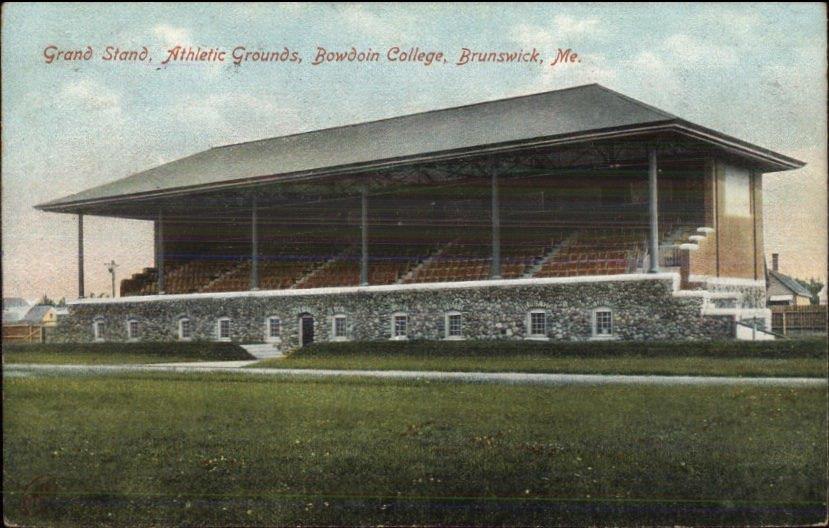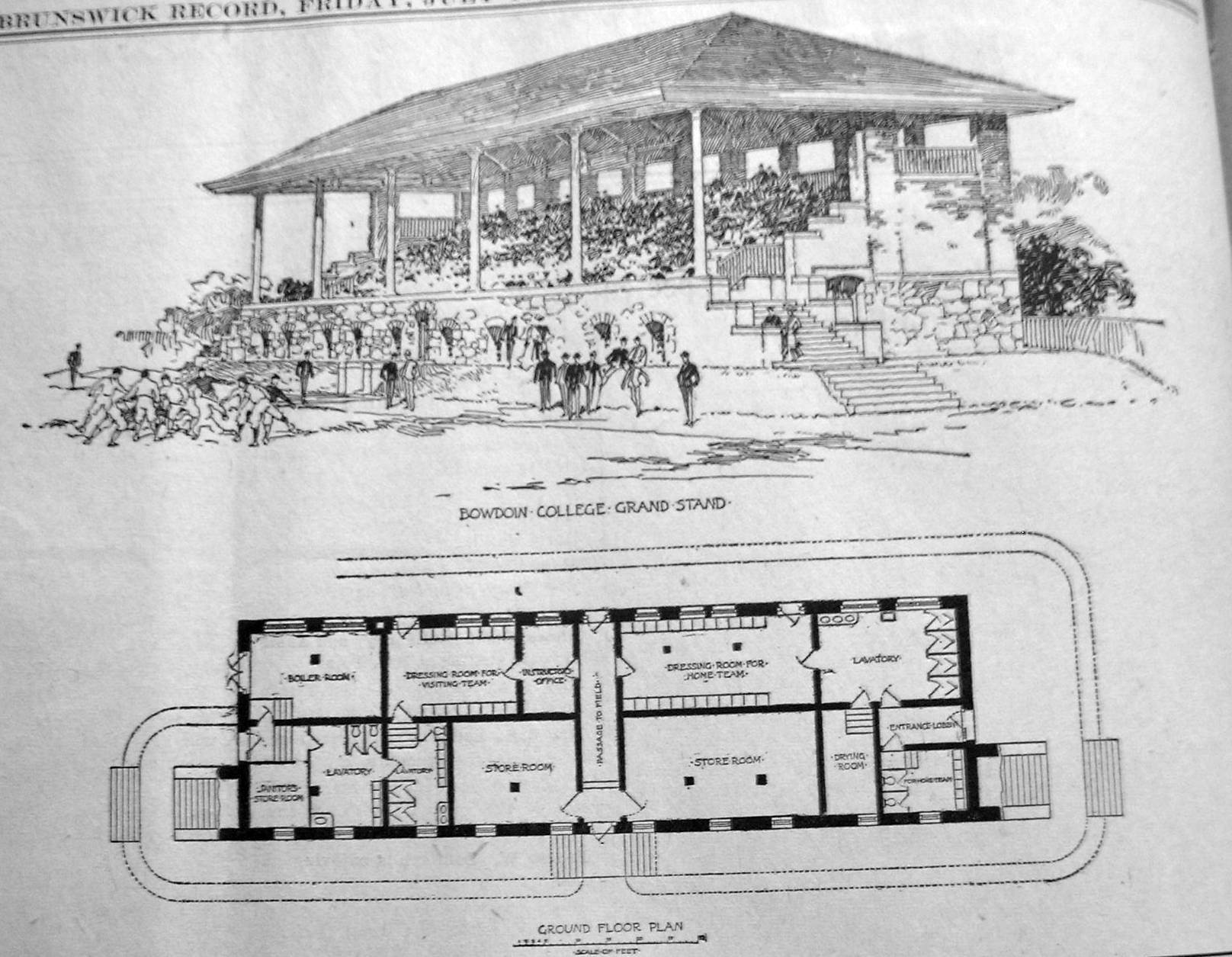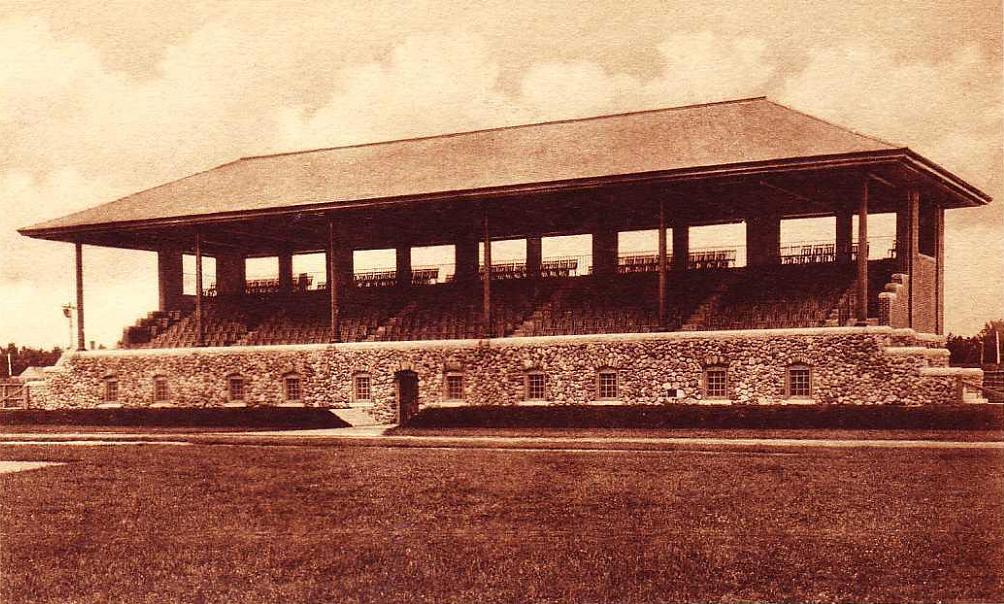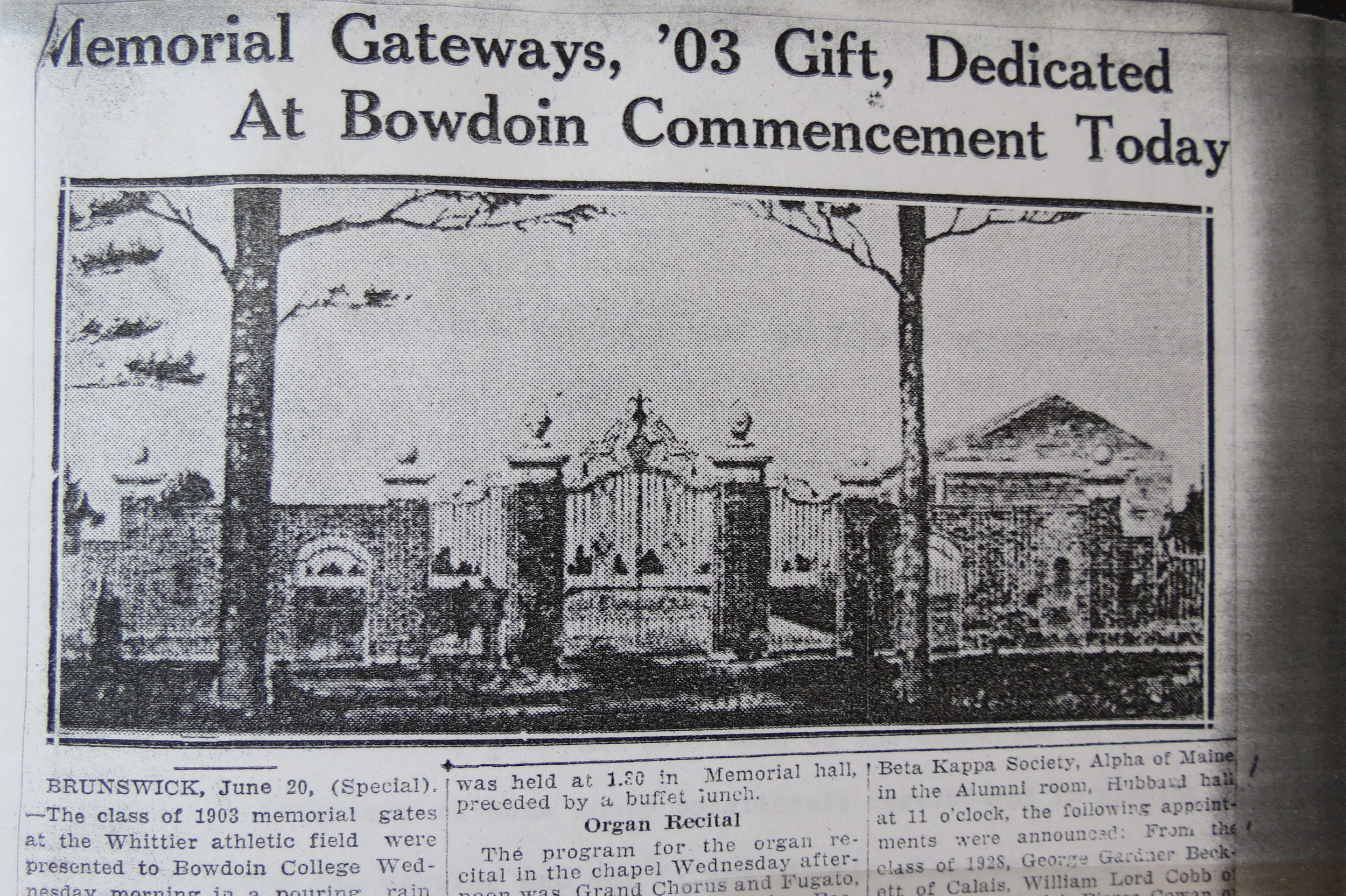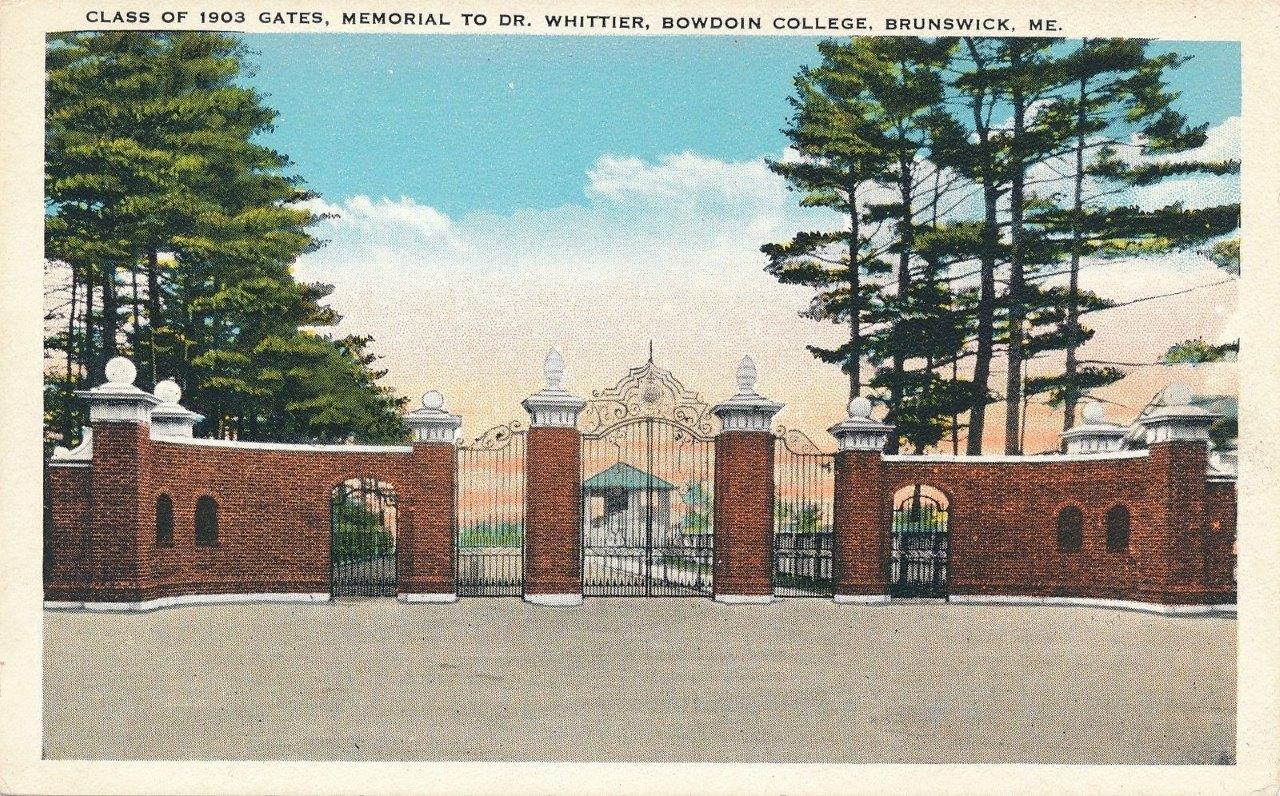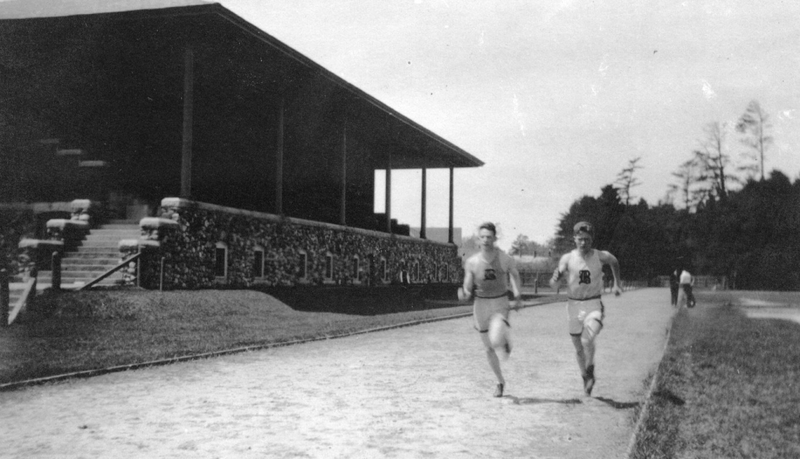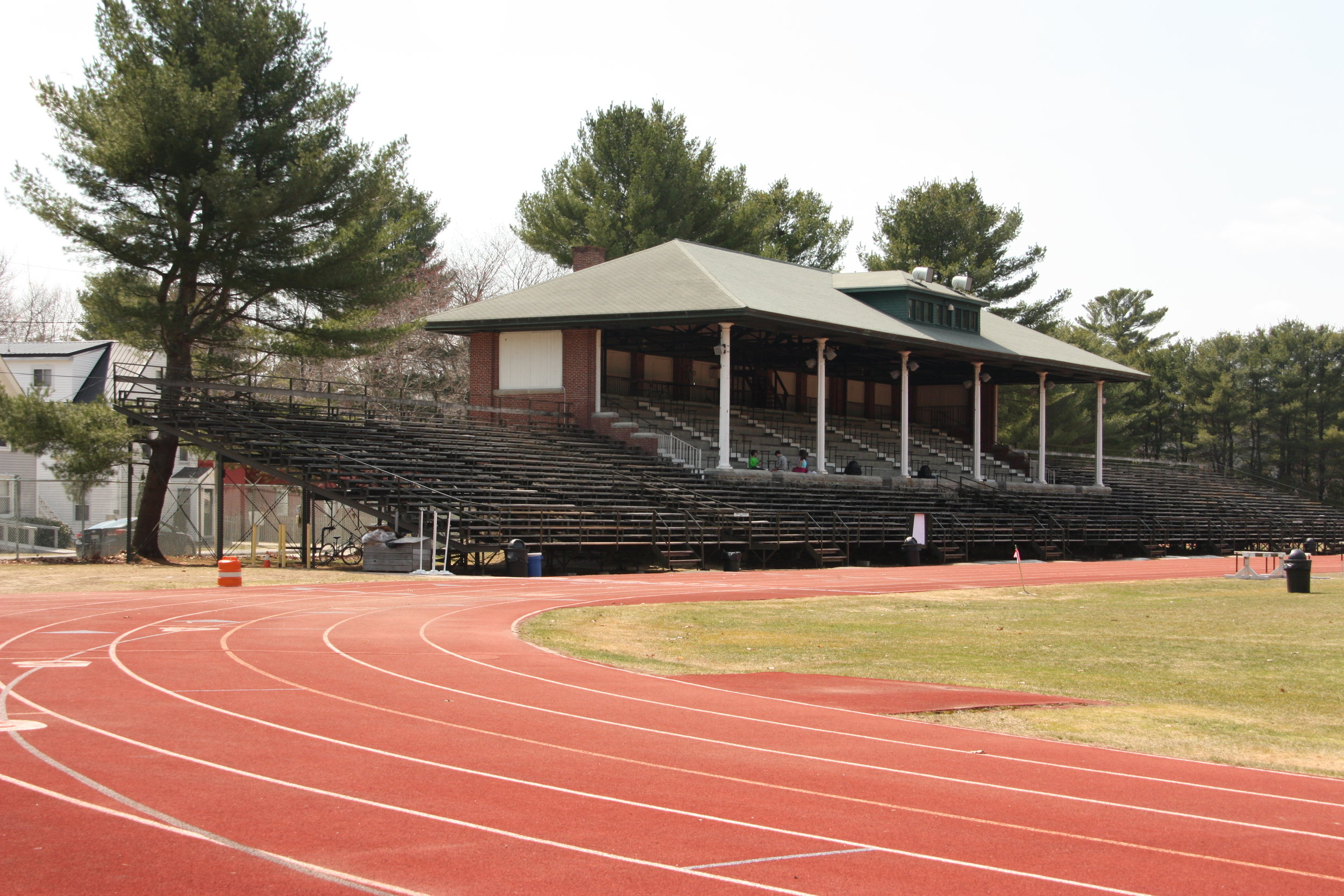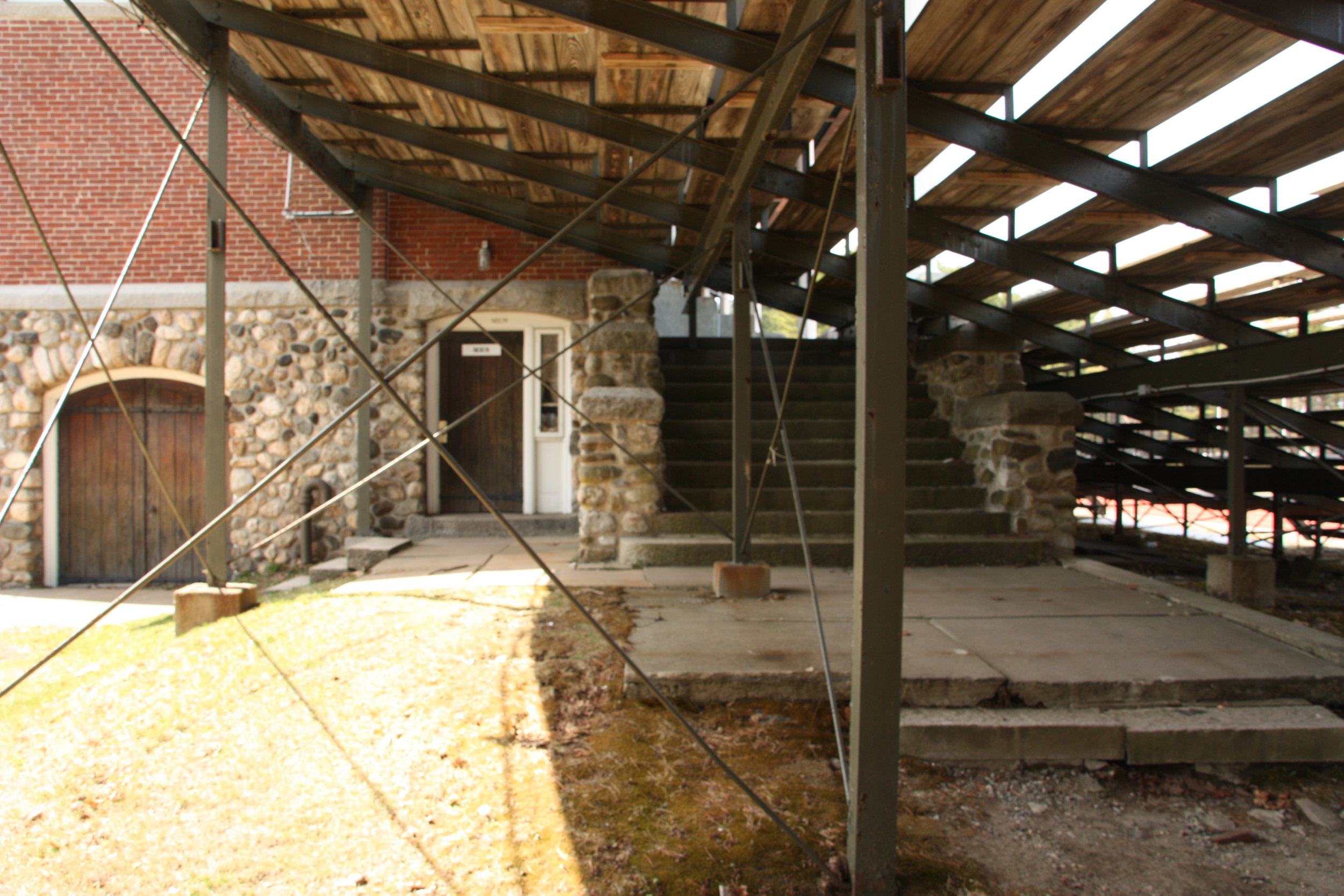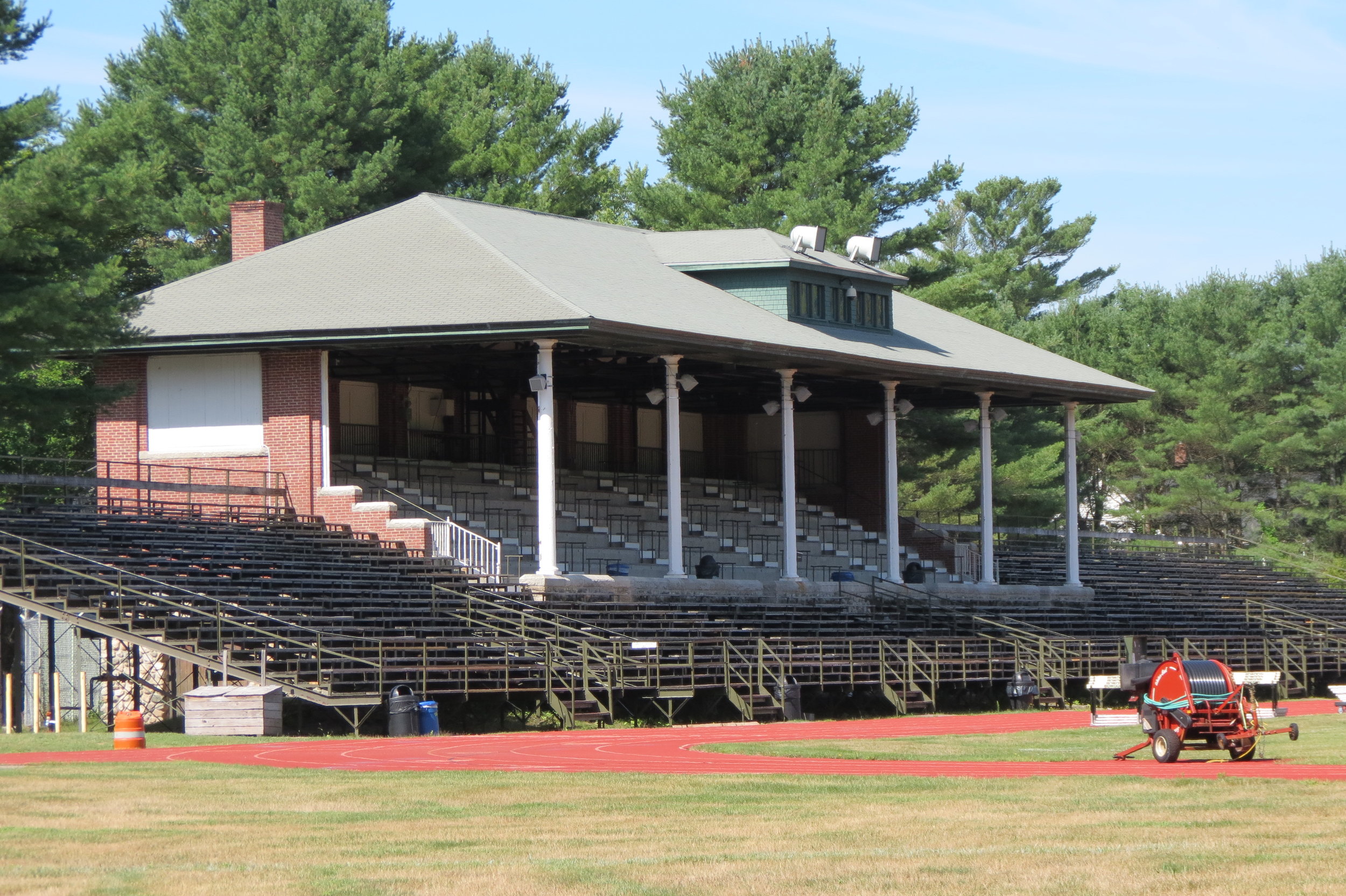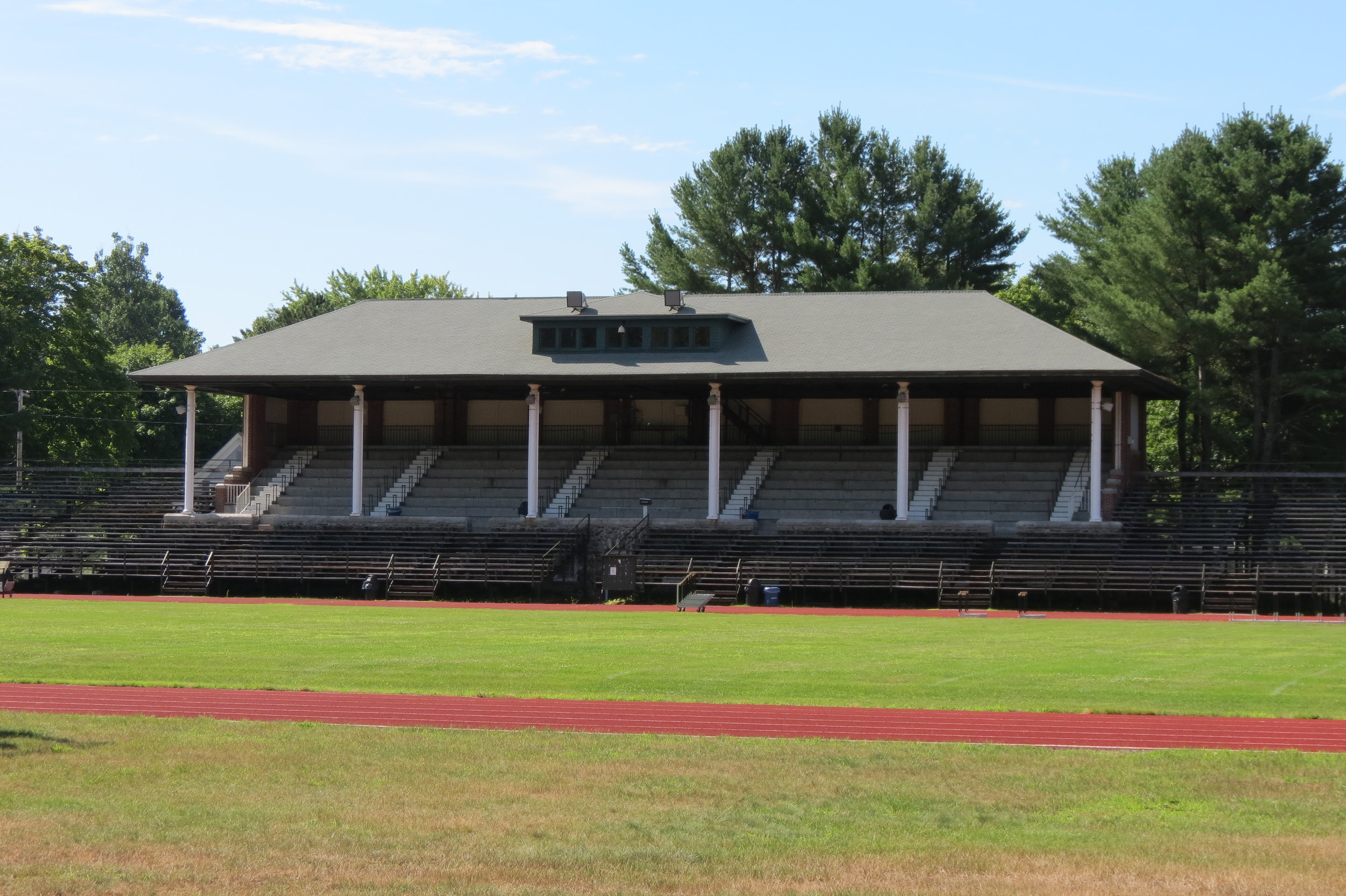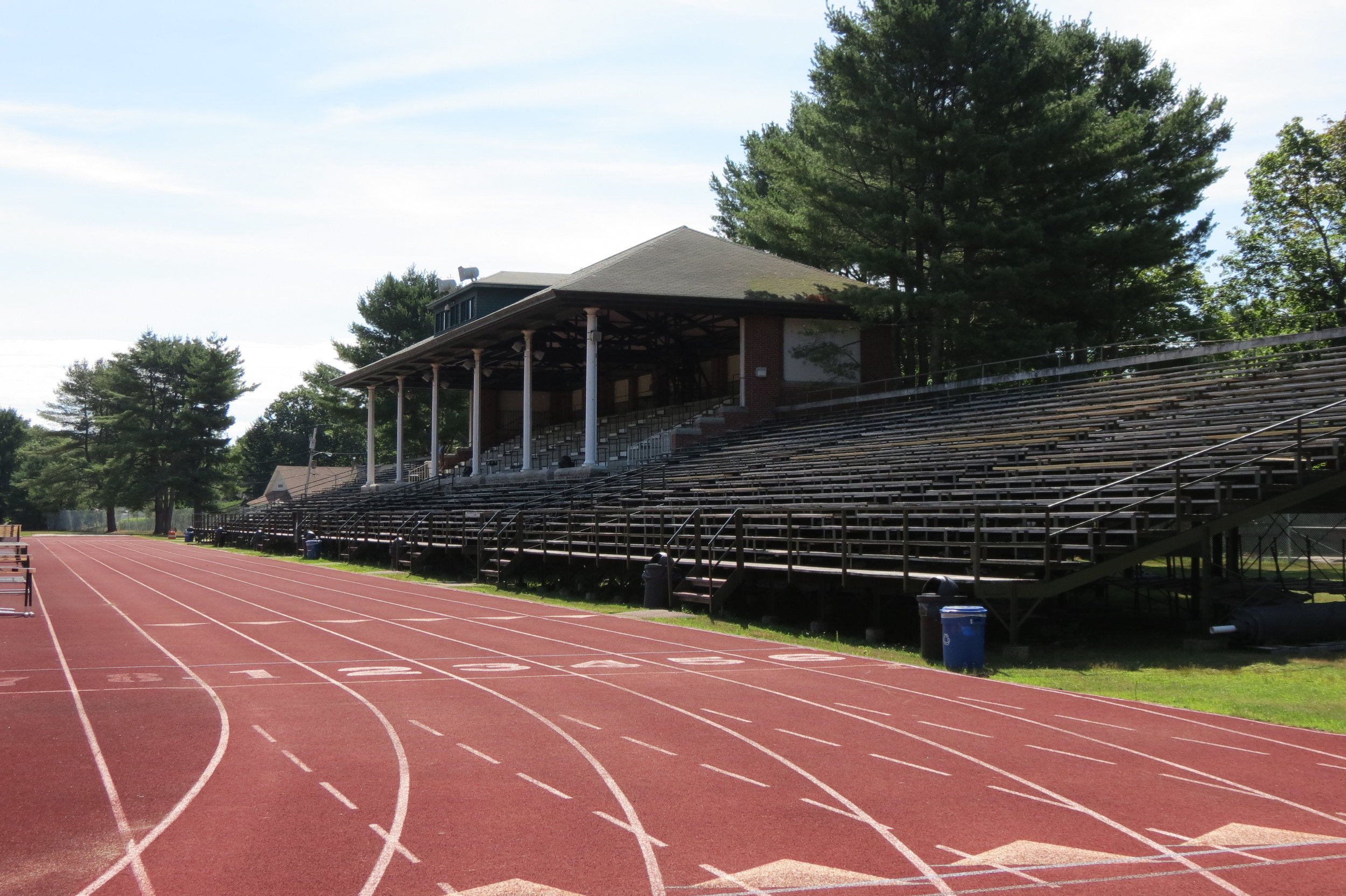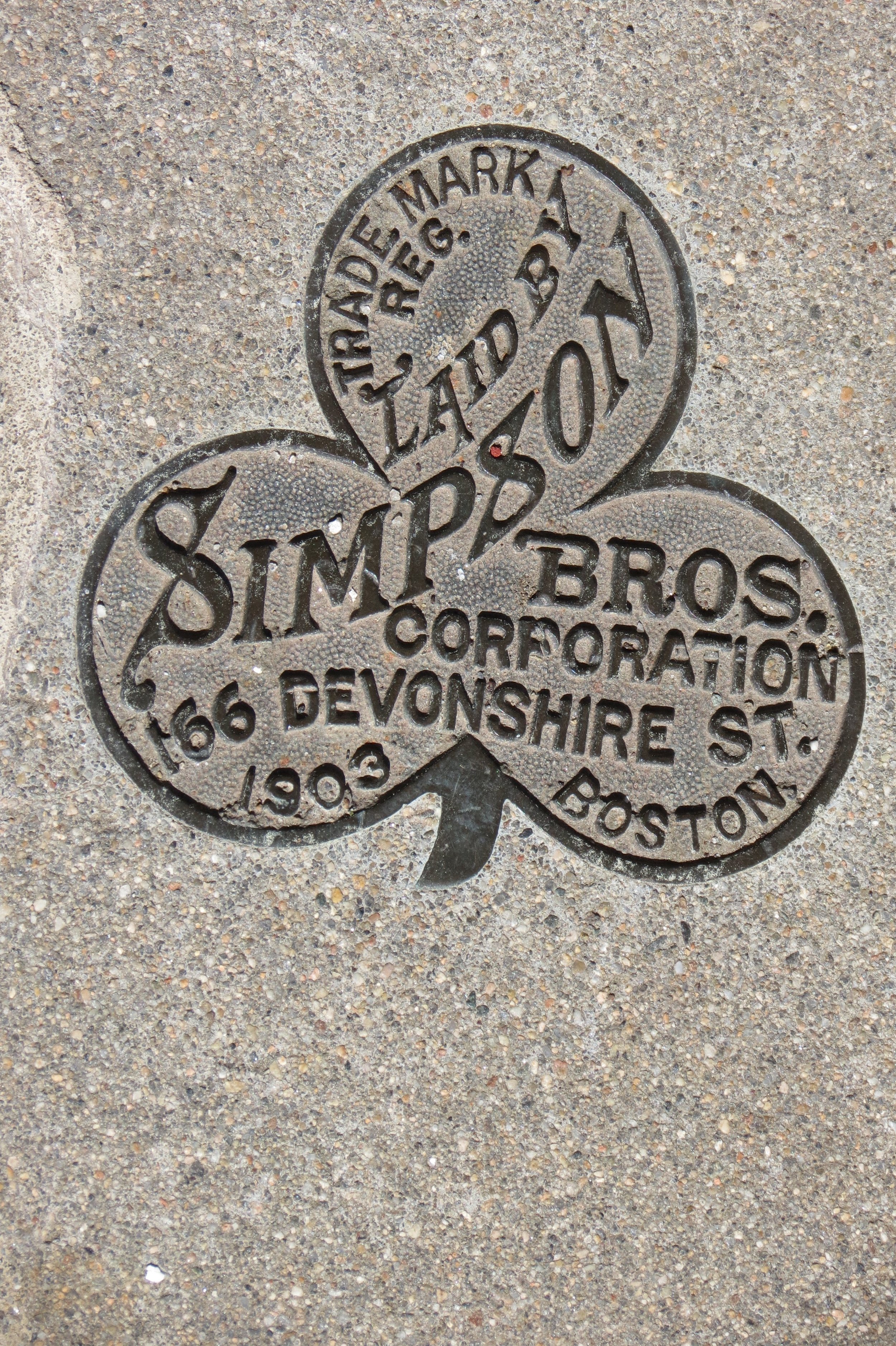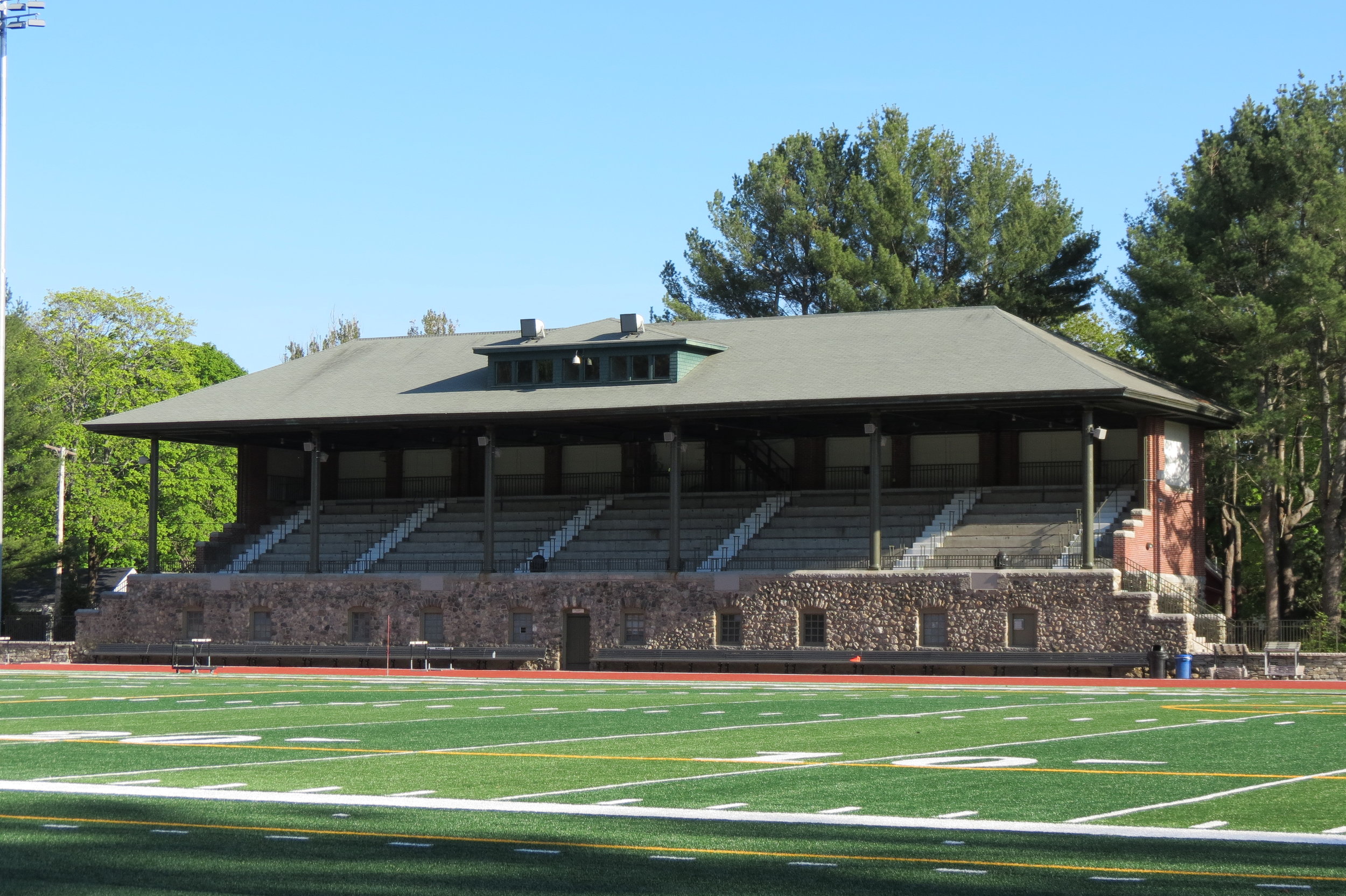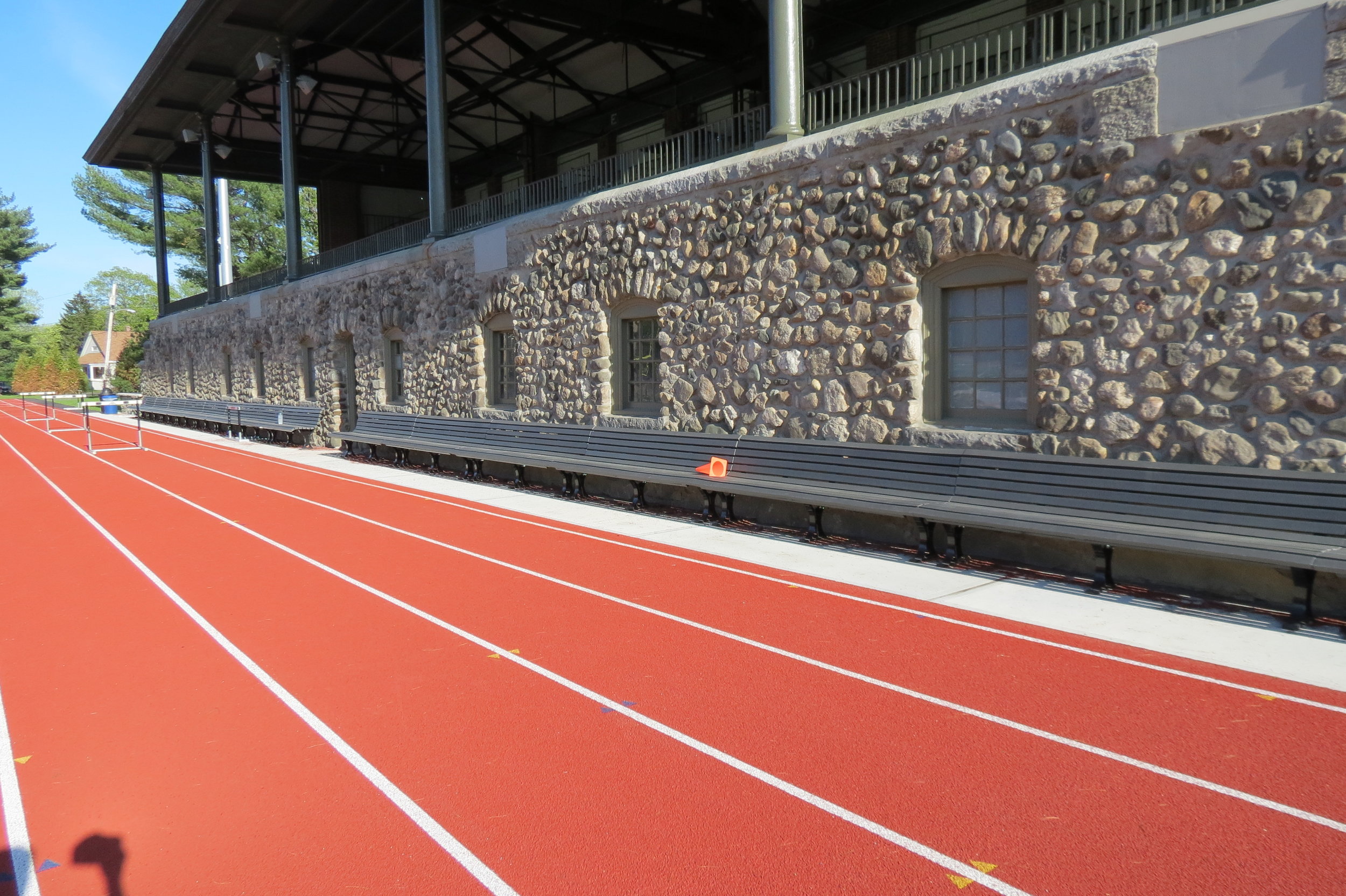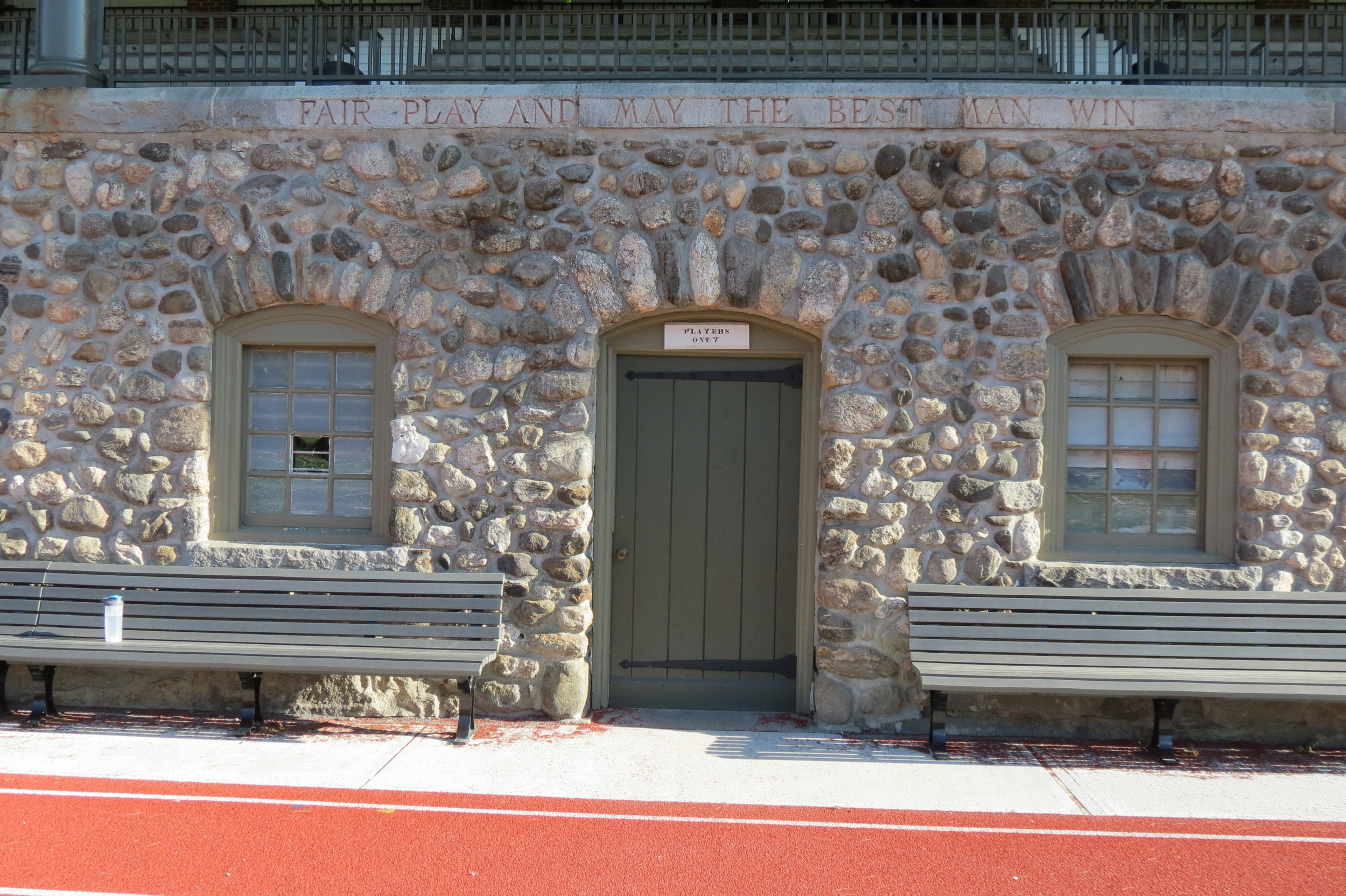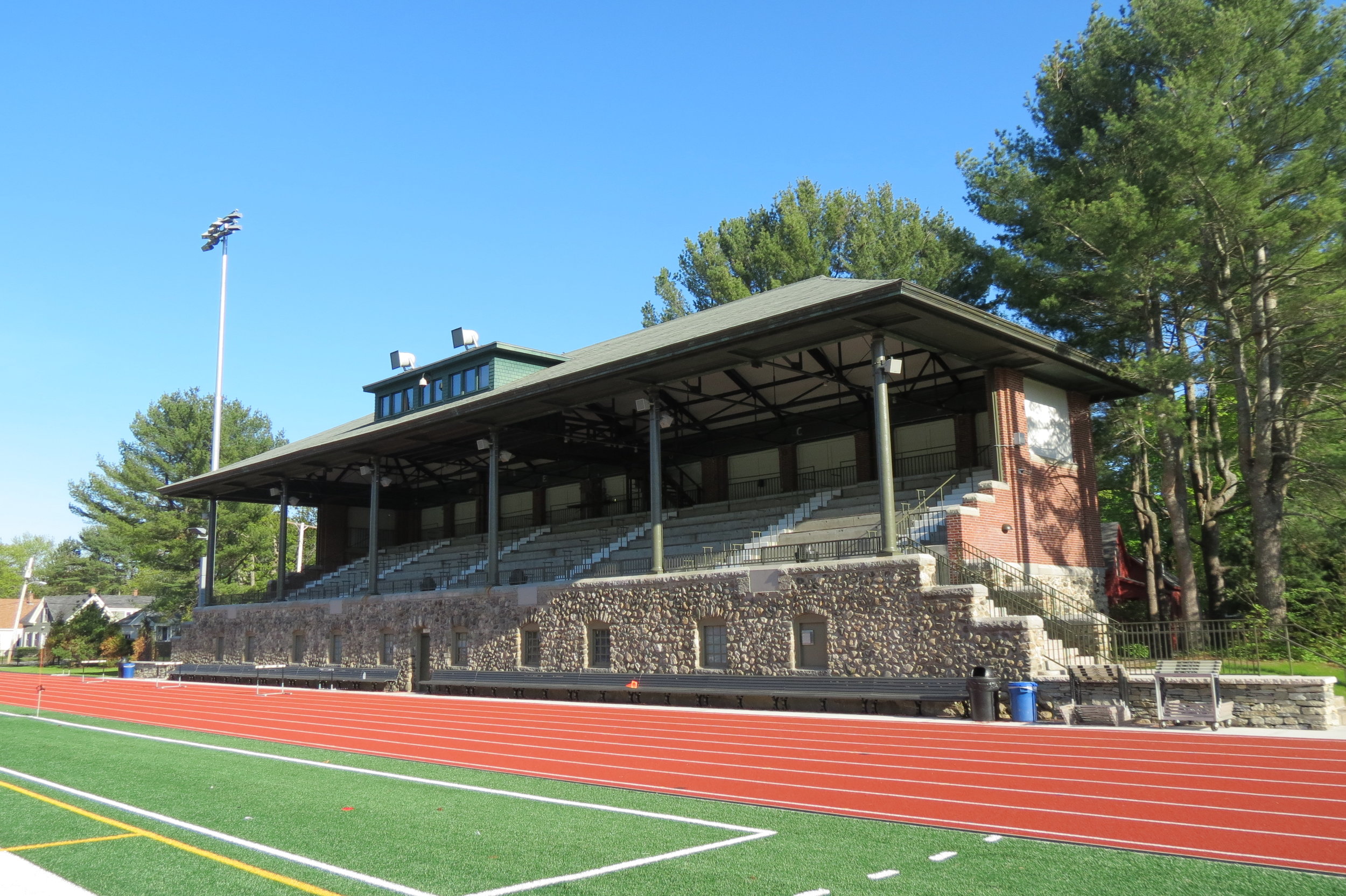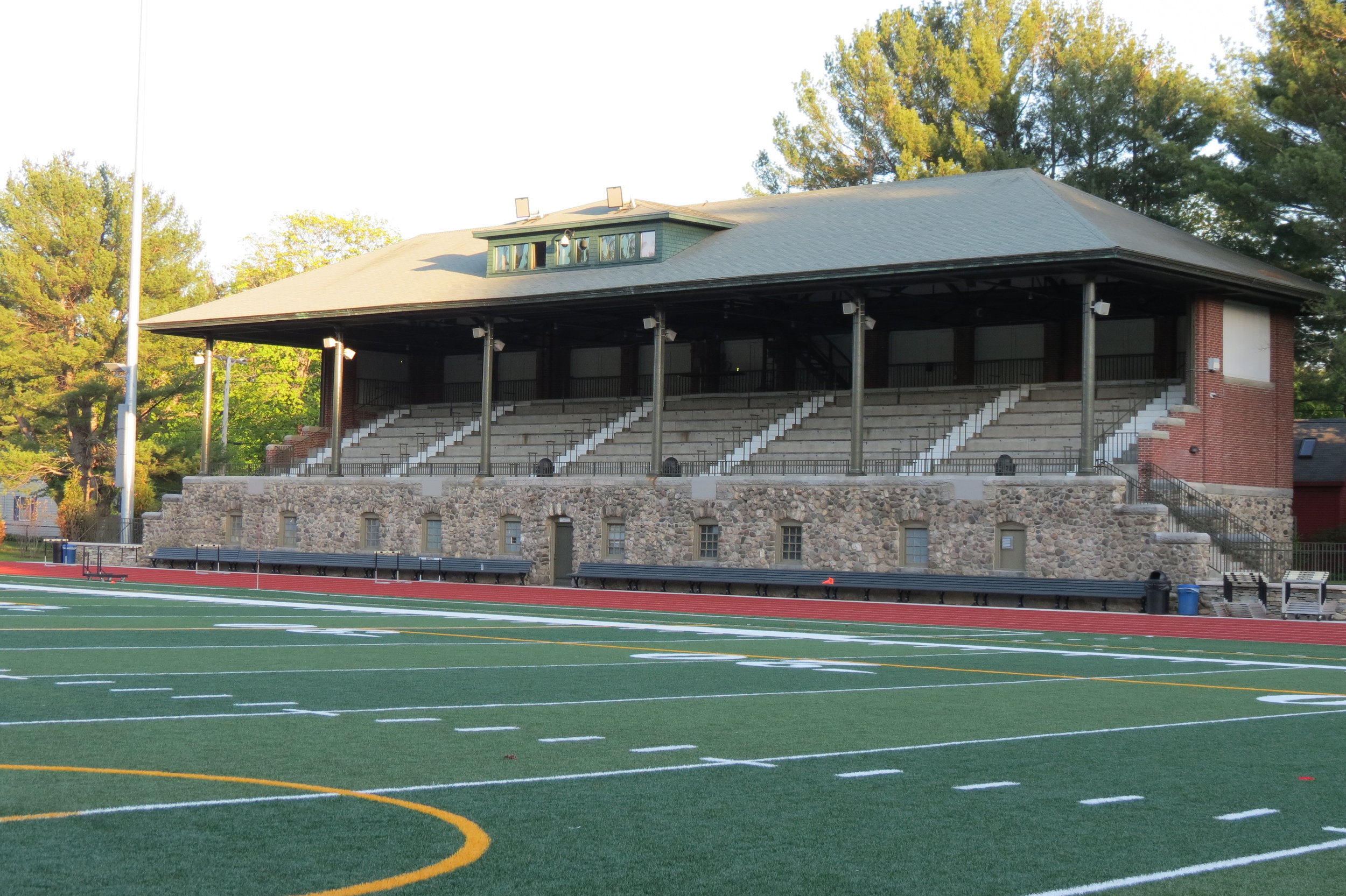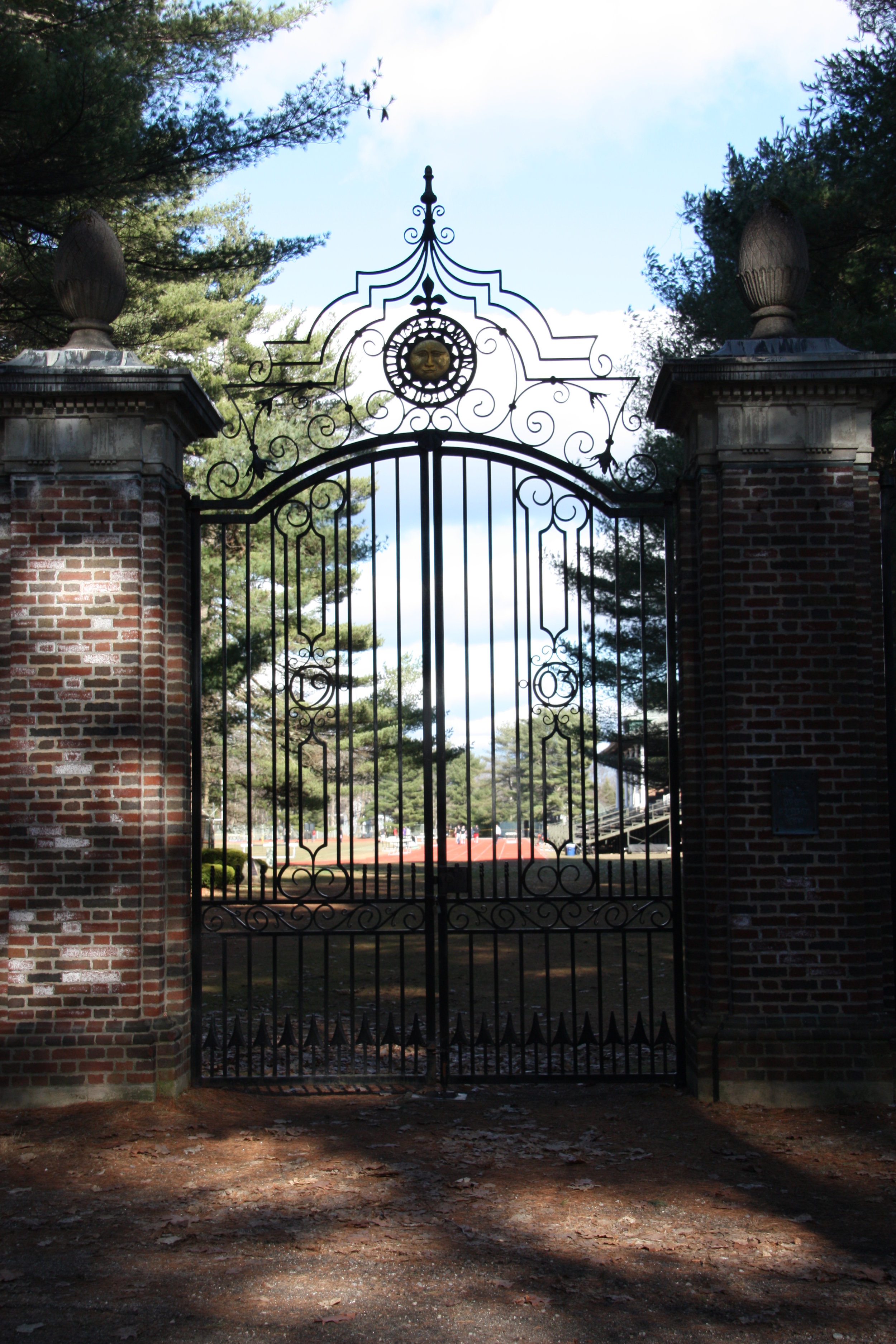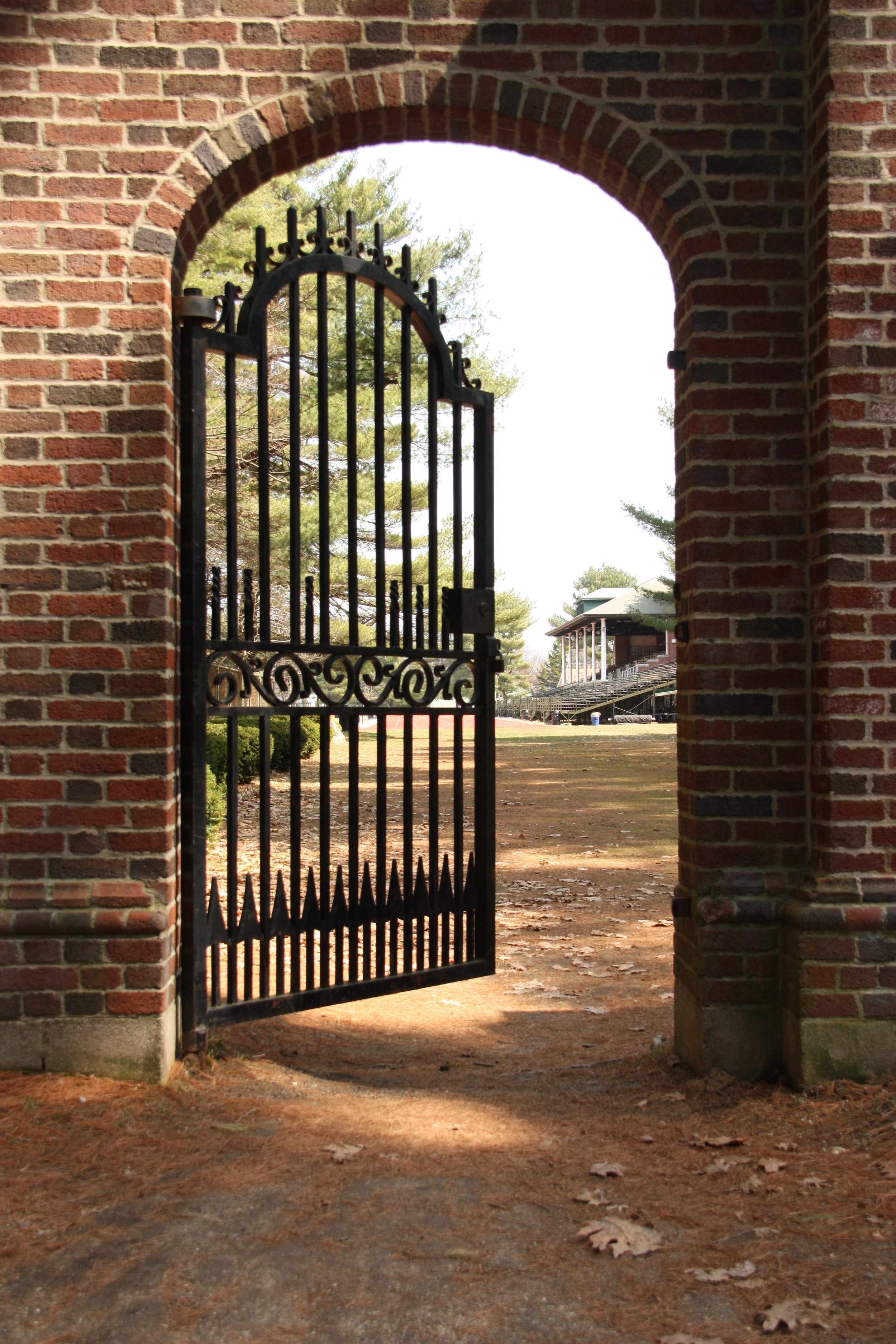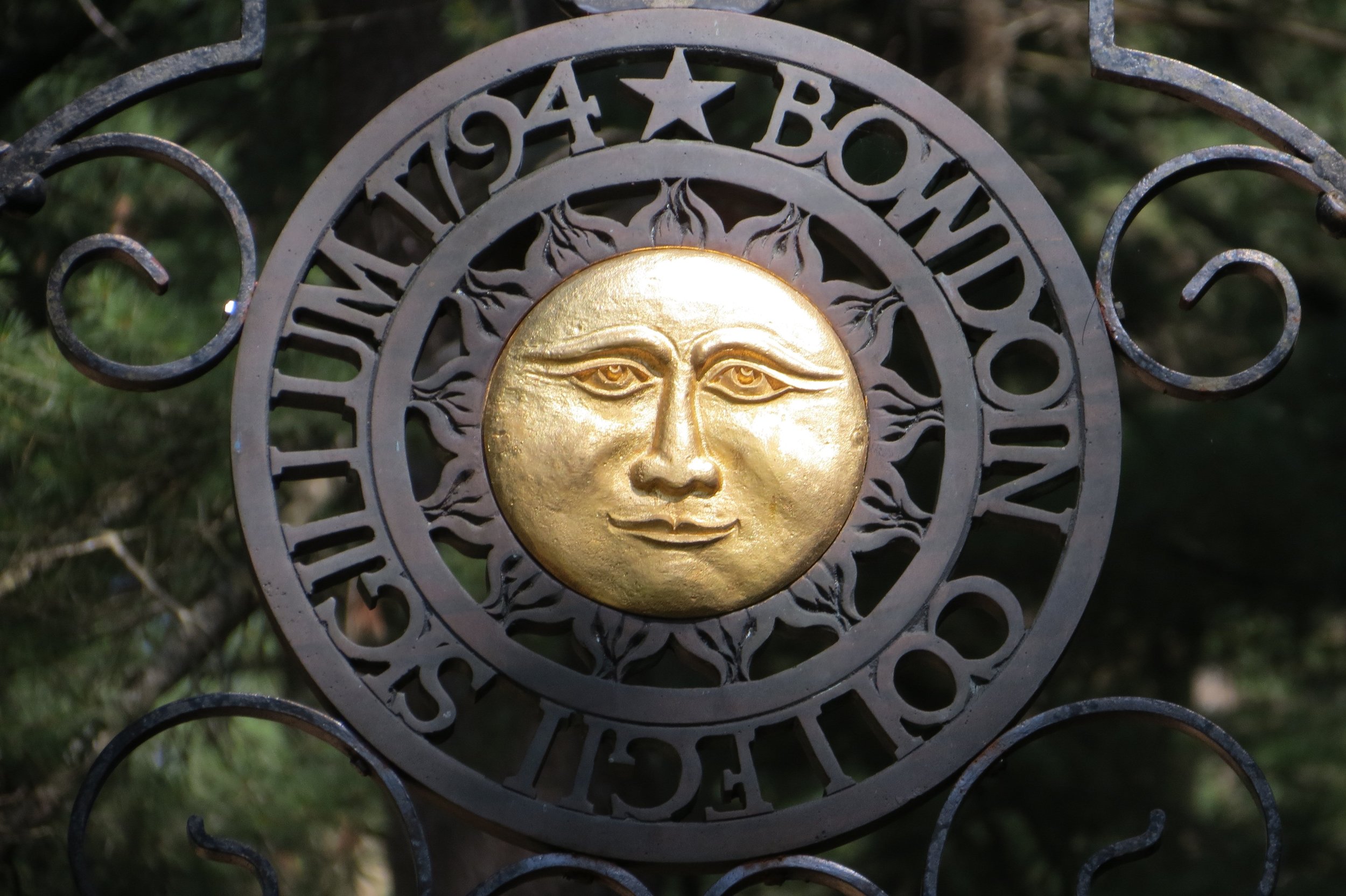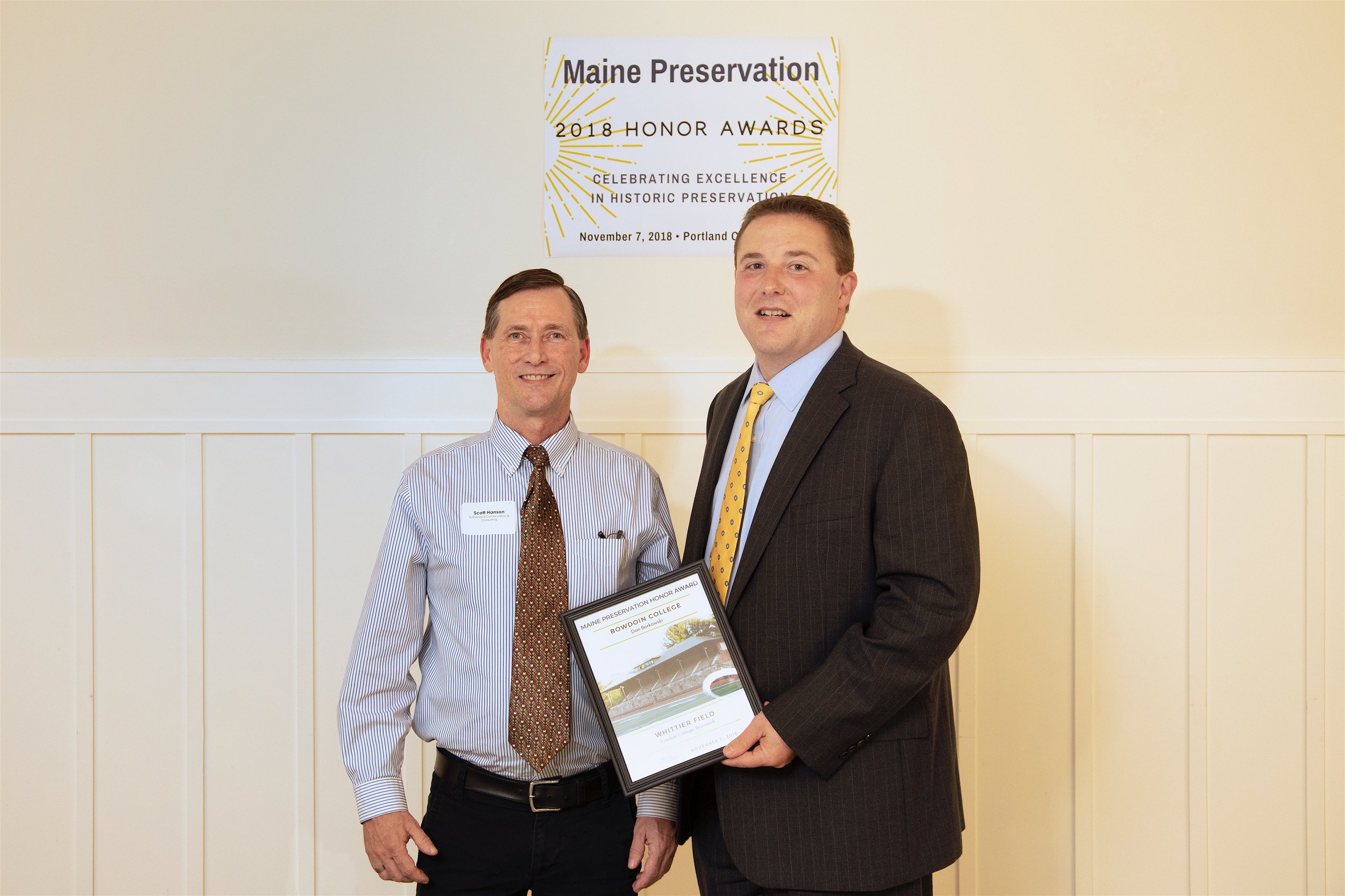Bowdoin’s first Director of Athletics, Dr. Frank Nathaniel Whittier, was honored in 1896 with the construction of Whittier Field, now part of the Whittier Field Athletic Complex. The field was developed during a time when intercollegiate sports, such as football, baseball, and track and field, were becoming more and more popular. By 1904 the complex had become so well-used that temporary wooden bleachers were replaced with the Hubbard Grandstand, designed by Boston architect Henry Vaughn. In 1928 the Memorial Gate was added, a gift from the Class of 1903. Whittier field has not only contributed to the athletic education of students at Bowdoin College, it was also the site of a 1972 Olympic Training Camp and the home track of the Olympic Gold Medal winner (and Bowdoin alumna) Joan Benoit Samuelsen.
In addition to witnessing incredible history, the complex has seen major changes over time. Complementing the originals, wooden and later steel bleachers were built around the Hubbard Grandstand, hiding the fieldstone base. The paint scheme on the grandstand was changed as well.
In 2017 Bowdoin College, as part of laying the groundwork for the rehabilitation of the track and Hubbard Grandstand, hired Sutherland Conservation & Consulting to prepare a National Register nomination for the complex. This move assisted in fundraising for the final project, which would restore the paint colors of the grandstand and move the bleachers to the opposite side of the field.
As the project got underway SCC undertook cross-section microscopy paint analysis to determine the Grandstands original paint scheme. Workers also installed new artificial turf on the field and widened and replaced the 1980s artificial track surface. A complication arose when regrading exposed several feet of the foundation below the fieldstone wall of the grandstand. SCC recommended installing compatible benches in front of the wall which successfully screened the foundation without altering the historic structure.
Bowdoin College’s National Register listing and rehabilitation of the Whittier Field Complex has restored key historic elements to one of the most storied collegiate football fields in America while preparing the facility to expand and flourish well into the 21st century.
